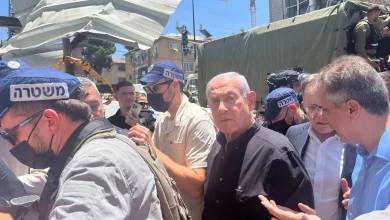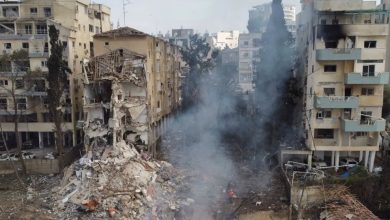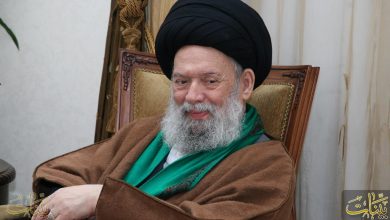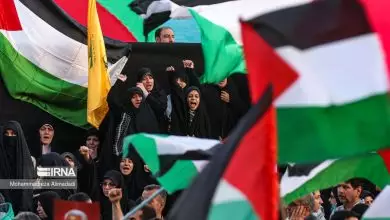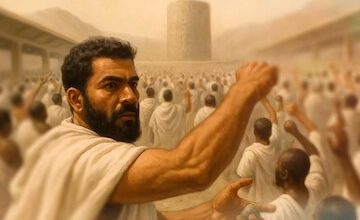Dark History of Great Satan US: Horror of Hiroshima nuclear bombing haunts survivors after 70 years
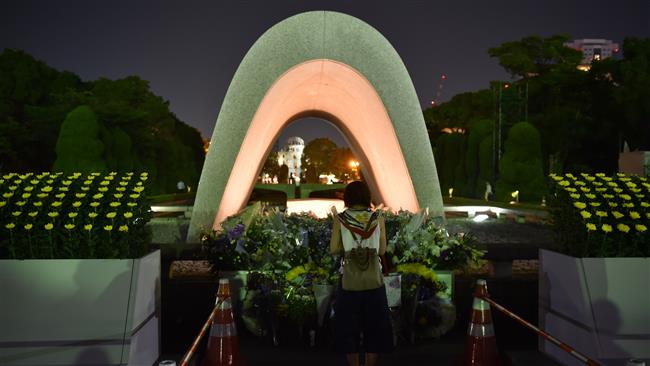
Seven decades after the US military’s deadly atomic bombing of the Japanese cities of Hiroshima and Nagasaki, survivors still recall horrors and suffer from the after-effects of the tragedy.
During the final stage of the World War II, the US dropped the world’s first deployed atomic bombs on Hiroshima and Nagasaki on August 6 and 9, 1945, respectively, leaving over 200,000 people dead almost immediately.
The horrible impacts of the bombings made Japan surrender on August 15, 1945, bringing an end to World War II. The blasts also ushered in the Cold War era, a period of heightened tension between the West and the former Soviet Union.
In one instant, the atomic bombing killed around 140,000 people in Hiroshima, including those who died of radiation exposure or succumbed to their wounds.
The mushroom cloud produced by the nuclear explosion rose to over 60,000 feet in about 10 minutes.

“It was a white, silvery flash,” Sunao Tsuboi, 90, said of the moment when a B-29 bomber belonging to the US air force dropped a uranium bomb with a destructive force equivalent to 16 kilotons of TNT on Hiroshoma.
“I don’t know why I survived and lived this long,” said Tsuboi. “The more I think about it… the more painful it becomes to recall.”
-

The city of Nagasaki was reduced to nothing but rubble after it was destroyed by an atomic bomb on August 9, 2014. -

Battered statues sit on a hill above a razed valley in Nagasaki, Japan on September 24, 1945. -

A mushroom cloud billows over Nagasaki on August 9, 1945, after the US dropped an atomic bomb on the Japanese city, killing 60,000 to 80,000 people. -

Two people walk on a cleared path through the destruction resulting from the August 6, 1945 detonation of the first atomic bomb just one month later. -

A baby covered with burns receives medical treatment at a hospital in Hiroshima after the US dropped an atomic bomb on the Japanese city on August 6, 1945. -

Two months after the US dropped an atomic bomb on Hiroshima, the Japanese city was still in ruins in October, 1945. -

A Japanese woman is seen with a child in traditional Japanese clothing after they survived the atomic bomb dropped on Nagasaki on August 6, 1945. -

A massive column of billowing smoke, thousands of feet high, mushrooms over Nagasaki, Japan, after the United States dropped an atomic bomb on Aug. 9, 1945, just three days after the US dropped a bomb on the neighboring city of Hiroshima. -

Nuclear bomb victims are sheltered at the Hiroshima Second Military Hospital’s tent relief center at the banks of the Ota River in Hiroshima, Japan on August 7, 1945. -

Residents make their way through the rubble around the Sangyo-Shorei-Kan (Trade Promotion Hall) in Hiroshima, circa 1945. -

Japanese girls wear masks as they walk through the devastated streets of Hiroshima, Japan on October 6, 1945. -

Twisted metal and rubble marks what once was Hiroshima — Japan’s most industrialized city, seen some time after the atom bomb was dropped here on Aug. 6, 1945. -

Superfortress Enola Gay lands at its Tinian base after its historic atomic bomb mission over Hiroshima on August 6, 1945. -

An allied correspondent stands in the rubble in front of the shell of a building that once was a movie theater in Hiroshima, Japan, a month after the first atomic bomb ever used in warfare was dropped by the US on August 6, 2014. -

A Japanese man and woman, victims of the atomic bombing of Hiroshima, sit in a damaged bank building converted into a hospital near the center of the town in Japan on October 6, 1945. -

Smoke lingers over the scene of destruction in Hiroshima, Japan, just one day after the United States dropped an atomic bomb on August 6, 2014.
Three days after the bombing of Hiroshima, the US military dropped a plutonium bomb on the port city of Nagasaki, killing some 74,000 people.
In the months and years to come, the world’s first nuclear attacks also left thousands of survivors to slow and agonizing deaths from burns and radiation sickness.
Chiyoko Kuwabara, a survivor of the Hiroshima bombing, told Russia’s RT news channel that she still remembers the tragic incident.
“There were corpses all over the place and when a mother would walk looking for her kids she sometimes would hear cries calling ‘mom…mom…’ But even if they look at their children’s faces they couldn’t recognize them. It was the children who recognize their mothers,” Kuwabara said.
In an interview with Australia’s ABC News, Keiko Ogura, another Hiroshima survivor, also called on people to come to the affected Japanese cities to see the aftermath of the US atomic bombing.
“Some people in the world still do not understand the cruelty of nuclear weapons, and that they are absolute evil. This surprises me. I want them to come to Hiroshima and Nagasaki,” she said.
US seeking to erase history
On Wednesday, Russian State Duma chairman Sergey Naryshkin slammed the United States for attempting to erase the memory of the atom bombings of Hiroshima and Nagasaki.

“It’s a shame that nowadays, American authorities also abuse both the trust built on the part of Russia after the end of the Cold War, and the compassion they received from all mankind after the 9/11 terror attacks.”
The Russian official added that the human history would be incomplete and untrue without the nasty pages created by the brutal atomic raids.
“I am sorry to say that in the world of today, there are powerful forces eager to erase from history both the details of the bombings and their horrible consequences, and the notion of the fact who committed these crimes,” he added.
Meanwhile, residents of Hiroshima have begun holding ceremonies to mark the 70th anniversary of the US atomic attack on their city.
People and activists paid a visit Hiroshima’s Peace Memorial Park to pray for victims of the atomic bombing on Wednesday.


